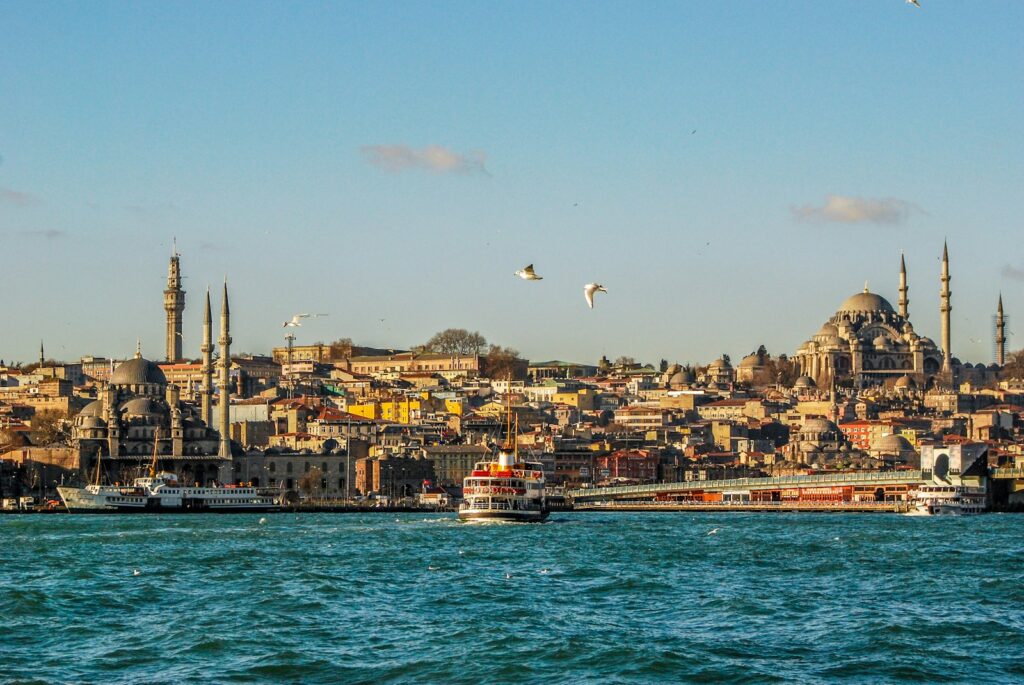Are you dreaming of an unforgettable city adventure? Welcome to the gateway where East meets West, where the mystique of the Orient fuses with European charm. This is Istanbul, Turkey’s largest and most captivating city, straddling the majestic Bosphorus. In this guide, we’ll take you beyond the usual tourist trails, sharing not just the iconic sights but our own secret spots and insider tips to help you uncover the soul of this enchanting city. Get ready to be swept away by the magic of Istanbul, where every street corner has a story to tell and every sunset over the Bosphorus brings a new wonder.
If you are planning a trip to Istanbul, then you’ve landed on the right page. In this article, you’ll find out what you can expect from the largest city in Turkey. We will share with you the most beautiful sights and of course our personal tips for your trip to this fascinating city situated on the Bosphorus.
1. Istanbul: What to Expect
This much we can promise: Istanbul is not just a city, it’s an experience that defies description. There’s a rhythm to its chaos, a melody in its hustle that you can only understand by being there. Istanbul doesn’t just exist; it pulsates, thrives, and dances to a beat of its own. It’s a metropolis alive with an energy that’s contagious, a vibrancy that seeps into your very soul.
And yet, Istanbul is unlike any city you’ve ever known. Picture this: a city that straddles two continents, where Europe and Asia don’t just meet but intertwine, crafting a cultural tapestry so rich, so vibrant, it’s spellbinding. This is where ancient history brushes shoulders with modernity, where centuries-old mosques share the skyline with sleek skyscrapers. Every step through Istanbul is a step through time, a journey across two worlds. Here, every street tells a story of convergence, every view a snapshot of contrasts. The beauty of Istanbul lies in this fusion, in this remarkable juxtaposition that makes it not just a city but a living, breathing paradox. This is the allure of Istanbul, a city that doesn’t just charm you, but captivates your imagination in ways you never thought possible.
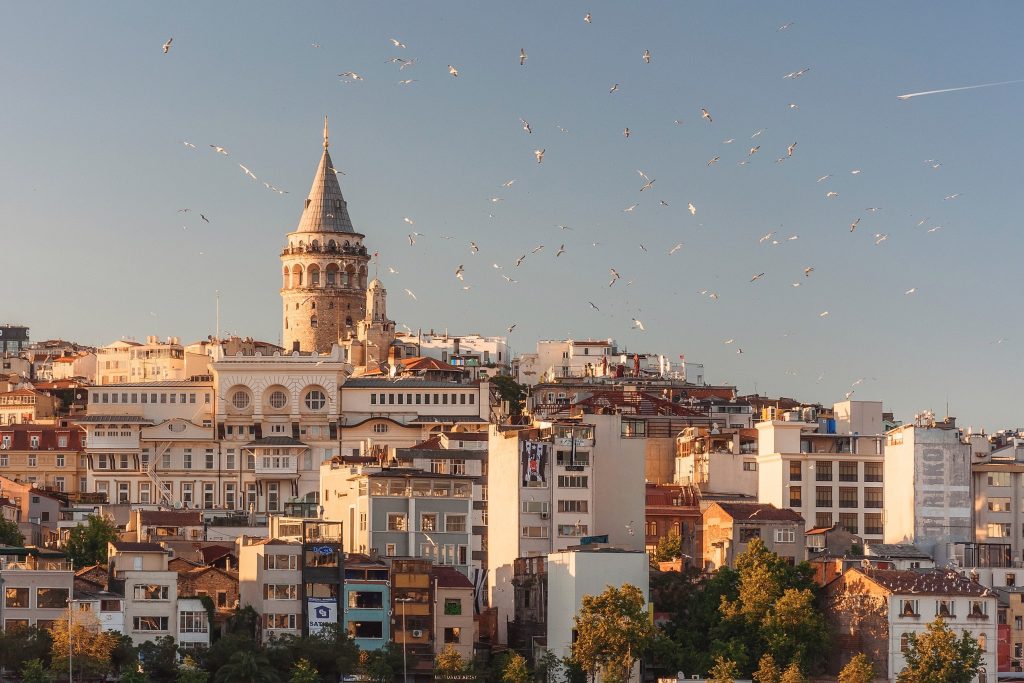
How safe is Istanbul?
At the moment of writing this article no travel warnings for Istanbul as far as the British Foreign Ministry exist. Up-to date information can be found under the following link: Travel information Turkey.
Despite the terrorist attacks in 2016 and 2017, which led to a massive slump in tourism and a tense political situation, we never felt unsafe during our stay in Istanbul. We walked around the city a lot, even at night and spend a wonderful night at a festival without ever feeling unsafe or afraid. We experienced Istanbul as a great city, that can be safely explored.
Reading: Travel Guide for Istanbul
We can recommend the “DK Eyewitness Travel Guide Istanbul” which is still up-to date and was great in scouting interesting sights in advance. You definitely can’t go wrong with this guide.
You can get the guide here: Istanbul Travel Guide
2. What to Do in Istanbul
Hagia Sophia – A Testament to History’s Layers
The Hagia Sophia isn’t just a monument; it’s a poignant symbol of Istanbul’s layered history. Once a church, then a mosque, and now a museum, this architectural marvel is a must-see for its ability to visually and culturally represent the confluence of Christianity and Islam, the East and the West. Its sheer historical significance and architectural grandeur make it an unmissable experience.
Built in the 6th century under Emperor Justinian I, the Hagia Sophia was the world’s largest cathedral for nearly a thousand years. After the Ottoman conquest of Constantinople in 1453, it was converted into a mosque, with minarets and Islamic calligraphy adorning its structure. In 1935, it was secularized and opened as a museum, showcasing both its Christian mosaics and Islamic art.
Visitor Information:
Admission to Hagia Sophia is around 100 Turkish Lira, and it’s recommended to allocate at least 1-2 hours for your visit. The best way to get there is by taking the Tram line 1 to the Sultanahmet Station, which places you right in the heart of Istanbul’s historic district and within walking distance to the museum.
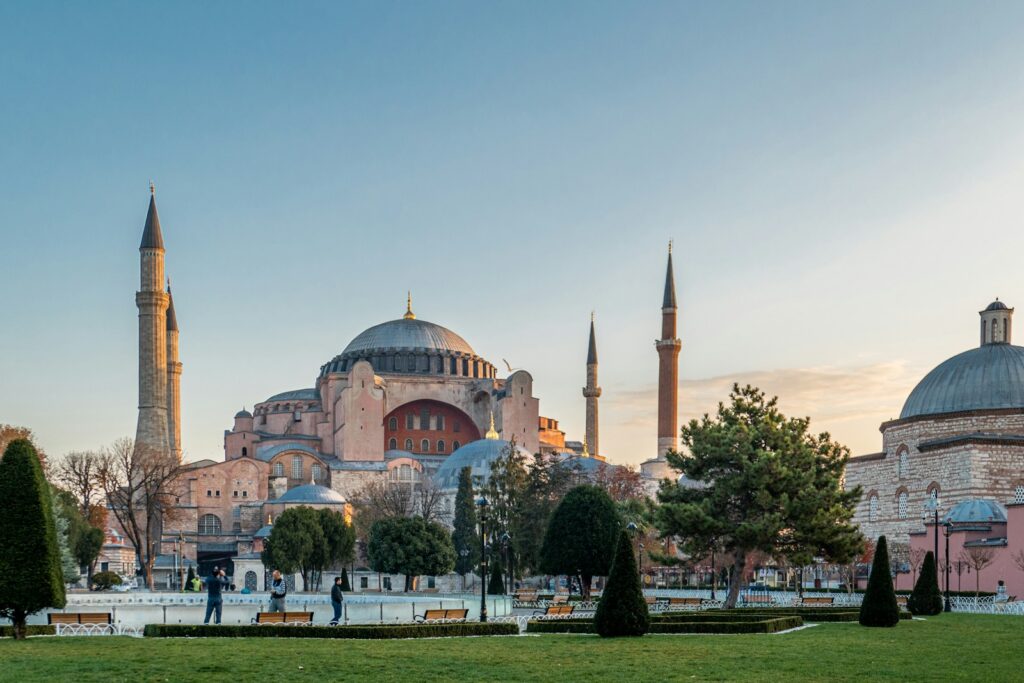
Topkapi Palace – A Glimpse into Ottoman Splendor
Topkapi Palace is more than a historical site; it’s a portal to the opulent world of the Ottoman sultans. With its rich architectural details, stunning courtyards, and a collection of artifacts, the palace offers a unique glimpse into the life and times of one of history’s most powerful empires.
Constructed in the 15th century, Topkapi Palace was the administrative and residential center of the Ottoman Empire for nearly 400 years. Its architecture is a testament to Ottoman aesthetics, and its Harem gives insight into the private lives of the sultans and their families.
Visitor Information:
Admission is around 200 Turkish Lira, with an additional fee for the Harem. Allocate at least half a day to explore the palace thoroughly. The palace is located in the Sultanahmet district and can be reached by Tram line 1, alighting at either the Sultanahmet or Gülhane stations.
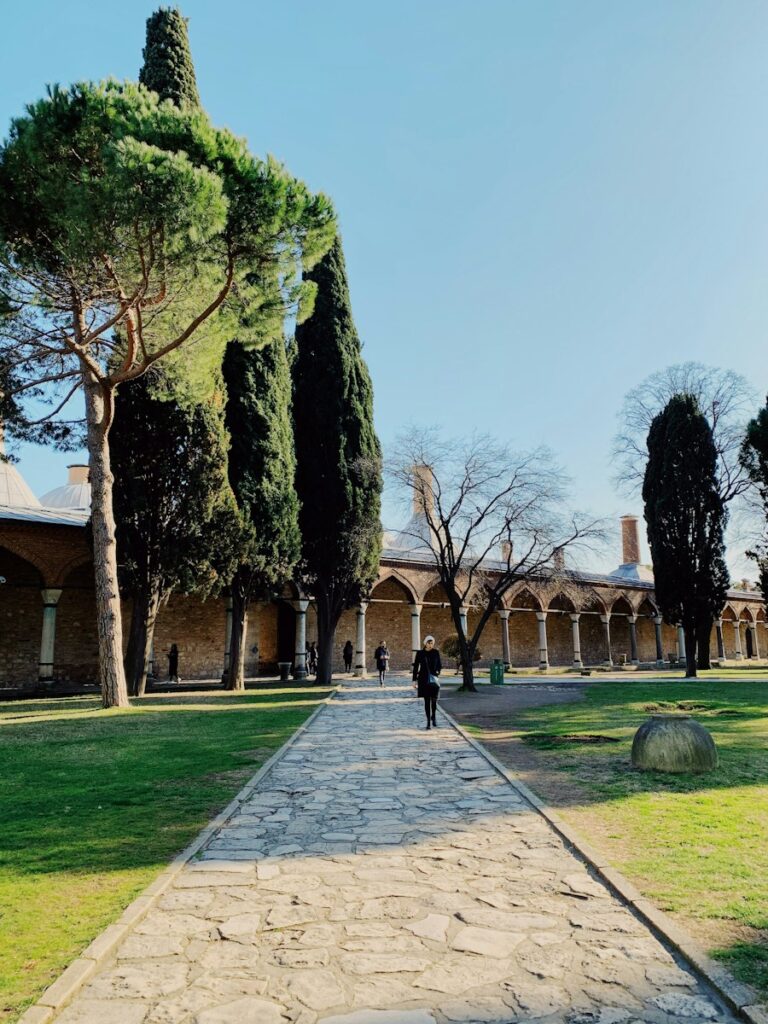
Grand Bazaar – Unique Shopping Experience
The Grand Bazaar is not just a market; it’s a sensory explosion. One of the world’s oldest and largest covered markets, it offers an immersive experience into Turkish culture, crafts, and the art of bargaining. From exotic spices to handwoven carpets, the bazaar is a kaleidoscope of Turkish heritage and craftsmanship.
Established in the 15th century, the Grand Bazaar began as a small vaulted bedesten (warehouse) and expanded over centuries. It was an essential trading center during the Ottoman era and remains a bustling hub of commerce and tourism. Its labyrinthine alleys, lined with thousands of shops, reflect the rich trading history of Turkey.
Visitor Information:
Entry to the Grand Bazaar is free. Plan to spend at least a couple of hours exploring. It’s located in the Fatih district, easily accessible by the Tram line 1 to the Beyazıt-Kapalıçarşı stop. The bazaar is open Monday to Saturday, from 9 am to 7 pm.
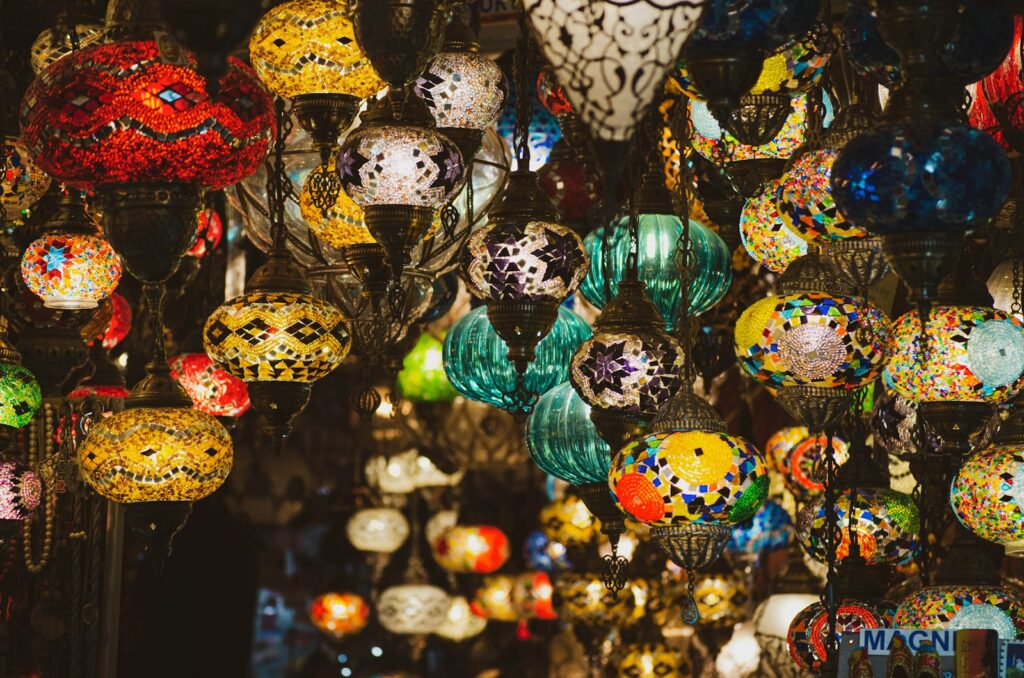
Galata Tower – Panoramic Vistas of Istanbul
The Galata Tower offers some of the most breathtaking panoramic views of Istanbul. Climbing this medieval tower is like stepping back in time, with the reward of a modern city’s sprawling vista at the top. It’s a perfect spot for photographers and romantics alike.
Dating back to the 14th century, the Galata Tower was part of the Genoese colony in Constantinople and served as an observation tower. It has survived earthquakes and fires, witnessing the city’s transformation over centuries.
Visitor Information:
The entrance fee is around 25 Turkish Lira. It’s best to visit either early in the morning or during sunset for the most spectacular views. The tower is located in the Beyoğlu district, and the nearest metro station is Şişhane. The viewing platform can get crowded, so prepare for a possible wait.
The Blue Mosque – An Icon of Istanbul
The Blue Mosque, officially known as Sultan Ahmed Mosque, is a masterpiece of Ottoman architecture and a symbol of Istanbul’s rich Islamic heritage. Its striking beauty and serene ambiance make it a must-visit for anyone exploring Istanbul. With its cascading domes and six slender minarets, the mosque is a stunning sight, particularly at sunset when it’s bathed in a soft, golden light. The Blue Mosque stands not only as a place of worship but also as a testament to the artistic and architectural prowess of the Ottoman era.
Built between 1609 and 1616 during the rule of Sultan Ahmed I, the mosque is a culmination of two centuries of Ottoman mosque development. It incorporates Byzantine elements of the neighboring Hagia Sophia with traditional Islamic architecture, creating a harmonious and majestic structure. The mosque’s most distinctive feature, its six minarets, caused controversy as it equaled the number of minarets at the Mosque of Mecca, the holiest site in Islam. In response, a seventh minaret was later added to the Mosque of Mecca.
Visitor Information:
Admission to the Blue Mosque is free, but it’s a functioning mosque, so it’s closed to non-worshippers during the five daily prayer times. Visitors should dress modestly, with legs and shoulders covered, and women are required to cover their hair. Free headscarves are often provided at the entrance. Shoes must be removed before entering, and plastic bags are provided for carrying them. It’s recommended to spend about 30 minutes to an hour inside. The mosque is located in the Sultanahmet district, easily accessible by the Tram line 1 to the Sultanahmet Station. Visitors are advised to visit early in the morning or later in the afternoon to avoid the large tourist groups.
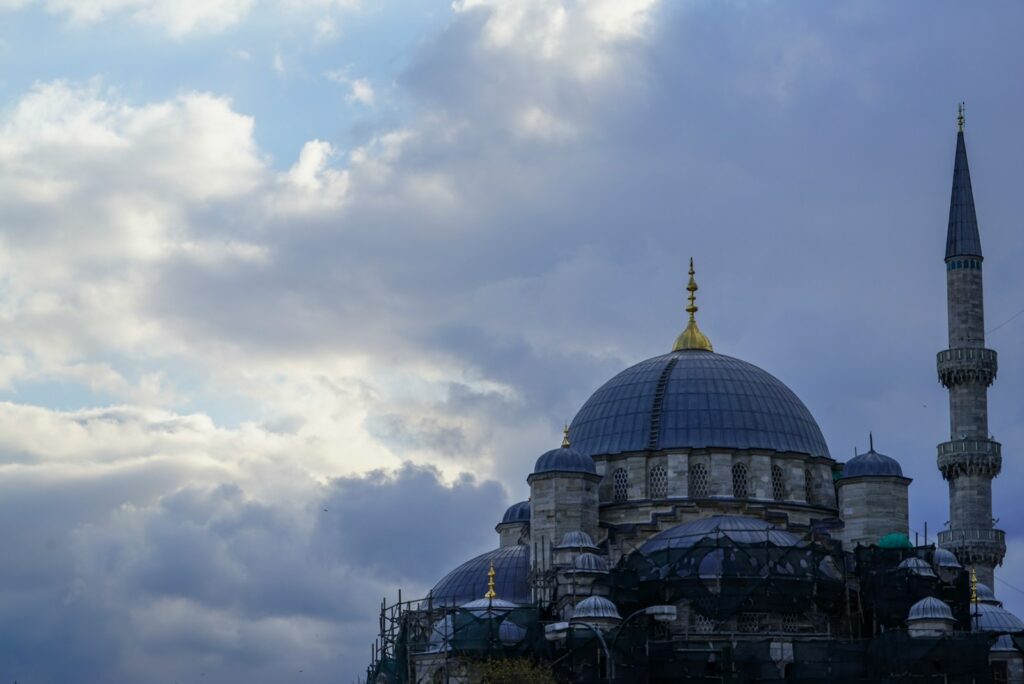
Bosphorus Cruise – A Unique City Perspective
A Bosphorus cruise offers a unique perspective on Istanbul, highlighting the striking contrast between the city’s European and Asian sides. It’s an unforgettable experience, providing stunning views of Istanbul’s skyline, historic palaces, and modern bridges. This journey underscores the geographical and cultural diversity of this unique metropolis.
The Bosphorus has been a critical waterway for centuries, shaping the city’s history. It has witnessed Byzantine fleets, Ottoman galleys, and modern-day cargo ships, reflecting Istanbul’s evolving role in global commerce and politics. The shores of the Bosphorus are dotted with palaces and fortresses, each with stories dating back to different eras of Istanbul’s past.
Visitor Information:
Cruises vary in length and price, with shorter trips costing around 25 Turkish Lira. Longer, more comprehensive tours can take several hours. Ferries can be boarded at multiple points along the Bosphorus, but the Eminönü Ferry Terminal is a popular starting point. It’s easily reachable via the Tram line 1 to Eminönü Station.
Galata Bridge – A Link Between Two Worlds
The Galata Bridge isn’t just a physical structure spanning the Golden Horn; it’s a symbolic link between the historic peninsula of Istanbul and its more modern districts. This bridge is more than a convenient crossing point; it’s a microcosm of Istanbul life. Here, you’ll witness fishermen lining the rails, locals and tourists mingling in cafes and restaurants, and enjoy unparalleled views of the city’s skyline. The bridge represents the confluence of Istanbul’s past and present, its traditions and its modern aspirations.
The current Galata Bridge, opened in 1994, is actually the fifth bridge in this location, with the first dating back to the 19th century. Each iteration of the bridge has played a significant role in Istanbul’s urban development and cultural life. The bridge has always been a bustling spot, famous for its row of fish restaurants on the lower deck and the constant throng of pedestrians and anglers on the upper level. It’s not just a means of crossing from one side of the city to the other, but a place where people pause, interact, and take in the beauty of Istanbul.
Visitor Information: Visiting the Galata Bridge is free and can be an all-day affair. It’s an ideal spot for photographers, especially at sunrise or sunset, when the light casts a magical glow over the city. The lower deck of the bridge is renowned for its seafood restaurants, offering fresh catches and traditional Turkish mezes. To reach the Galata Bridge, you can take the Tram line 1 to Eminönü Station. Spend some time here, perhaps with a cup of Turkish tea or a freshly caught fish sandwich, and watch as ferries, fishing boats, and seagulls crisscross the waters below. The bridge provides a perfect vantage point for viewing some of Istanbul’s most famous landmarks, including the Hagia Sophia and the Blue Mosque, against the backdrop of the bustling city.

Galata Tower – A Sentinel Overlooking Istanbul
The Galata Tower is more than just an architectural landmark; it’s a historic sentinel offering some of the most spectacular panoramic views of Istanbul. This medieval stone tower, with its conical cap and commanding presence, invites visitors to gaze out over a city that sprawls across two continents. Climbing to the top of Galata Tower is like stepping back in time, providing a unique perspective on the evolution of this vibrant metropolis from Byzantine Constantinople to modern Istanbul.
The tower’s history dates back to the 14th century when it was built as part of the expansion of the Genoese colony in Constantinople. Originally named the Tower of Christ, it served various purposes, including as a watchtower and a prison. Over the centuries, it has withstood earthquakes and fires, each time being restored or rebuilt, symbolizing the resilience of Istanbul itself. The tower has also been the subject of many legends, including one where an Ottoman aviator, Hezarfen Ahmet Çelebi, purportedly flew from its top across the Bosphorus using wings of his own design.Visitor Information: The entrance fee to Galata Tower is approximately 25 Turkish Lira. Visitors should allocate about an hour for the visit, which includes time to ascend the tower, enjoy the views, and explore the small exhibition inside. The tower can be reached via the Şişhane Metro Station or by a short walk from the Karaköy Tram Station. It’s advisable to visit early in the morning or late in the afternoon to avoid the crowds and to capture the best light for photography. The narrow viewing deck provides a 360-degree view of Istanbul, encompassing the Golden Horn, the Bosphorus Strait, and the sprawling cityscape, making it a perfect spot for those looking to grasp the sheer size and diversity of this enchanting city.

